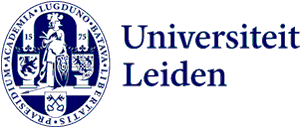
More than just blue domes and camels: new Louvre film on Uzbek artefacts
Terracotta pottery, precious ikat fabrics and the bazaars where these goods are sold: all these can be seen in a new Louvre film premiering on Friday 9 December. University lecturer Elena Paskaleva collaborated on the film Uzbekistan a timeless journey in Central Asia about Uzbek artefacts.
Paskaleva was asked by the film's director Yivko Darakchiev whether she wanted to be involved in the production process as an academic adviser. Her task was to link the artefacts featured in the accompanying exhibition to different locations in the Central Asian country. 'Last year I travelled to Uzbekistan with the director for a fortnight,' Paskaleva explains. She had chosen the locations beforehand. 'We travelled all over the country and filmed everything: bazaars, deserts and big cities. We also filmed ikat production in the Fergana valley.' Ikat is a special dyeing and weaving technique where people add motifs to textiles by dyeing the yarns prior to weaving. 'This can all be seen in the film.'
Artefacts
The exhibition to which the film is linked came about through a collaboration between the Louvre and the Art and Culture Development Foundation of the Republic of Uzbekistan under the Cabinet of Ministers of Uzbekistan. The film gives additional context to the artefacts on display in the exhibition. 'The film shows not only art objects, but also the areas they come from. We used as much footage as possible to show the continuity: the discovery of the artefact during archaeological excavations, its restoration and what it looks like now,' says Paskaleva. 'The film is well worth watching. When you go to an exhibition, the texts accompanying the artefacts are limited, so it’s useful to get some information beforehand.'

Remote places and their millennia-old history
Paskaleva also hopes the film will get rid of some stereotypes. 'People have a kind of orientalist image of the Silk Road with blue domes and camels. The reality is that the people are just trying to survive. Life in the desert is not easy. We want to show how people really live there.'
During her trip, she visited places where tourists usually don’t go. 'We travelled with a staff member of the Art and Culture Development Foundation. He helped us make contacts.' For example, they were able to travel to the Fergana Valley. 'It’s a closed region where not many foreigners are allowed to travel. It was special for me to experience in real life how terracotta and ikat are made. This history goes back thousands of years and people there still use these ancient techniques.'
Watch the film here
